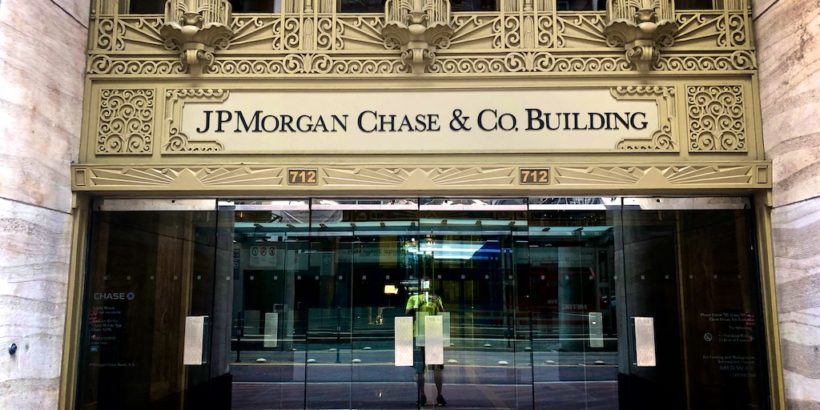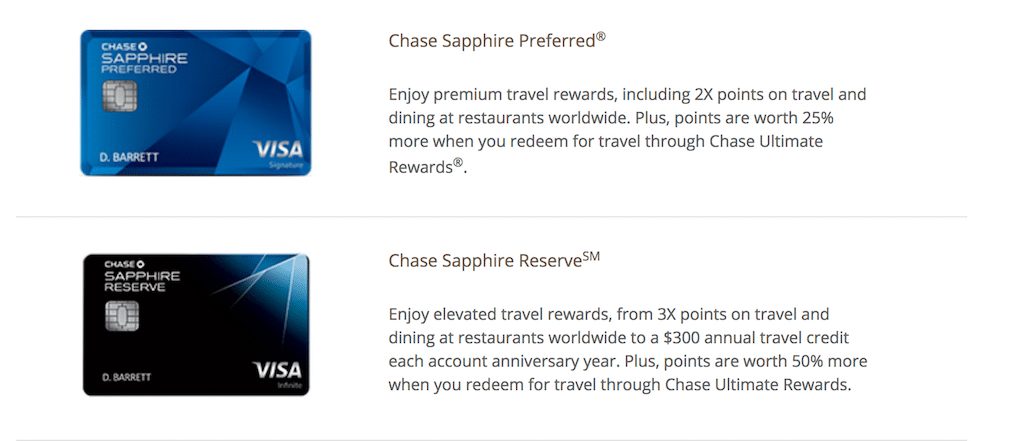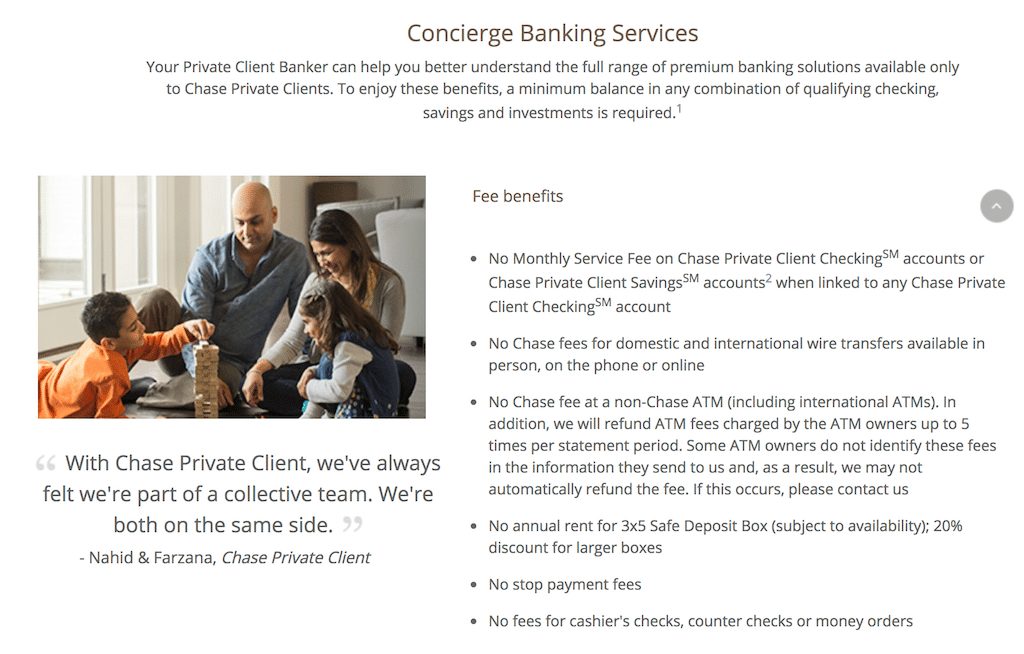Managing your wealth is crucial and there are several programs offered by many large banks aimed to help you plan for your financial future and Chase Private Client is one of those programs but with a focus on higher net worth individuals.
But what does Chase Private Client really have to offer?
Here’s a review of Chase Private Client, including a look at all of the requirements and benefits as well as some insight at whether or not it would be worth it for you. Be sure to check out the YouTube video below as well!
Interested in finding out the top travel credit cards for this month? Click here to check them out!
Table of Contents
What is Chase Private Client?
Chase Private Client is a wealth management program designed to help affluent clients manage their assets and provide them with special perks that can save them money and make their life easier.
- You can find the Chase Private Client log-in here
- The Chase Private Client phone number is: 1-888-994-5626
Tip: Use WalletFlo for all your credit card needs. It’s free and will help you optimize your rewards and savings!
How do you qualify for Chase Private Client?
Chase is pretty explicit about the requirements for Chase Private Client. They state that it’s available to “individuals who maintain an average daily balance of $250,000 or more in any combination of qualifying linked deposits and investments.”
Qualifying accounts are things like:
- Chase personal checking and savings accounts
- Chase Retirement CDs
- Chase Retirement Money Market Accounts
- Investment and annuity products, etc.
- Note: Balances in certain retirement plan investment accounts, such as Money Purchase Pension and Profit Sharing Plans, do not qualify.
Is $250,000 a mandatory requirement?
This $250,000 requirement is not necessarily a hard cut off. I had an off the record discussion with a Chase Private Client banker who informed me that it’s definitely possible to get in on Chase Private Client without meeting the $250,000 threshold.
Many others have confirmed that it’s possible to get in the program with assets hovering around the $100,000 range. The key seems to be to have a good relationship with a banker who perhaps sees some potential in you as a chase Private Client prospect.
Sometimes you might even receive a personal invitation without ever having the requisite level of assets.
In most cases, you’ll need to have a plan to increase your assets up to $250K with Chase very soon (within a year) so I wouldn’t try to “game” this requirement because in the best case scenario, you’d likely end up getting dropped from the program after you fail to meet the minimum requirements over time.
Also, if your start-of-month balances fall below $150,000, you will likely get hit with a $35 monthly service fee.
Is it worth parking $250K worth of assets with Chase?
Many people will point out that there are account options with much higher APYs (annual percentage yields) than what Chase Private Client offers. Simply put, you can earn a lot more in interest with other types of savings accounts so some people don’t feel like it is worth keeping your cash with Chase.
For example, if you had an an APY of 2.2% your $250,000 at the end of one year would net $5,560.77 in interest. Chase does not publish the interest rates for Private Client but I know that they are nowhere near 2.2% and that you would certainly be losing a lot of money on interest opportunities each year.
Of course you also have to factor in all of the Private Client perks below.
It’s possible that when you calculate all of the benefits, conveniences, and savings on fees, that Chase Private Client could end up offering you more value than simply parking your $250,000 with another bank. But you would need to seriously be using some of those benefits.
You can get an overview on other banks that offer more lucrative savings accounts with better APYs here and here.
And remember, you don’t have to keep your funds stored in a checking or savings account — you can also count investments and other forms of assets.
What are the Chase Private Client benefits?
The Chase Private Client benefits are numerous.
A dedicated team
As a Chase Private Client member, you’ll have your own private client banker and private client advisor.
Private client banker
Your private banker is meant to guide you through premium banking solutions, provide you with priority service, and connect you with other experts for mortgage and business banking needs. There is something to be said of the convenience factor here and having a hub for all of your banking/finance needs. For many people, this could take the stress out of obtaining things like mortgages and auto loans.
I’ve met a few Chase Private Client bankers and I’ve been pretty impressed by how competent they appear. The drawback here is that Chase doesn’t have branches everywhere and not every branch has a Chase Private Client banker on deck.
- You can search for Chase Private Client locations here.
Because of the lack of locations and private bankers, many have voiced complaints about the level of attention given to them as Chase Private Client members. Service is supposed to be priority but many feel that it’s not always the case. It might be a good idea to shop around for a Chase Private Client banker to the extent that’s possible.
Private client advisor
You personal advisor draws upon the expertise of J.P. Morgan investment professionals to develop tailored investment strategies that focus on your specific goals and advise you on relevant economic trends.
It’s worth noting that Chase pushes actively managed (versus passive) investments which means that you’ll be paying Chase a pretty fee to manage your investments. Many people prefer to go with self-managed or other low cost index funds, although there may be ways to bring your Vanguard or Fidelity funds into Chase Private Client without incurring substantial costs.
It’s worth remembering that you don’t have to invest your assets with Chase. But that takes you back to parking substantial assets with Chase that would likely be netting you more earnings in an account with a higher APY. Also, you can probably expect to constantly be hounded by your Private Client advisor about getting Chase to manage your funds.
Credit card benefits and 5/24
It used to be that Chase Private Client could allow you to get around the Chase 5/24 rule which is one of the many Chase application rules that prevents you from being approved for certain credit cards when you’ve opened five or more credit cards in the past 24 months.
When the Chase Sapphire Reserve came out many looked to Chase Private Client to try to help them get approval. However, that loophole eventually got closed and it’s no longer the case that you can get around 5/24 that way.
The good news is that Chase Private Client still offers special bonuses to its members for some credit cards so it’s often possible to net an additional 10,000 points for a sign-up bonus. (If you value Chase Ultimate Rewards around two cents per point then that additional bonus would be like receiving an additional $200.)
Your private banker may also be able to assist you with requesting higher credit limits on your credit cards.
It’s worth noting that the high-end JP Morgan Reserve Card (different from the Chase Sapphire Reserve) is designed for Chase Private Banking clients, which now requires balances of $10,000,000+.
Chase Private Client Fees
One of the major perks of the program is that you can avoid paying all sorts of fees. Many of these benefits are great for travelers who frequently rack up those pesky ATM fees and/or wiring fees when spending time abroad.
No ATM fees
One of the nice perks of Chase Private Client is that you won’t be charged fees at non-Chase ATMs and this even includes international ATMs! But Chase goes even further and will refund ATM fees charged by the ATM owners (you may need to follow up some times).
You can also enjoy no foreign exchange rate adjustment fees for debit card usage or ATM withdrawals in a currency other than US dollars.
There’s also no fee for non-ATM Cash transactions in the U.S. and abroad. This is when you obtain cash with your Chase Debit Card without a PIN at locations such as bank branch tellers.
Getting fees reimbursed for ATM usage, even on international trips, is an emerging trend so this is not quite as special as it once was. For example, you could open up a SoFi Money account (which just about anybody can get approved for) and avoid ATM fees including international fees. Many other people also choose to go with a Schwab Bank High Yield Investor Checking account.
Wire transfers
With Chase Private Client, you’ll have no Chase fee for all domestic and foreign wire transfers, incoming or outgoing, completed at any Chase branch, chase.com, via telephone or email. This is a huge perk if you regularly deal with international wire transfers since an outgoing Chase wire transfer could cost you as much as $45.
For those who deal with a lot of wire transfers, this is where I think a lot of the value is in terms of fees waived.
Higher limits
- Higher Chase QuickDeposit limits ($25,000 per day and $100,000 every 30 days)
- Higher Chase QuickPay with Zelle limits ($5,000 per day and $40,000 every 30 days)
- Higher daily ATM withdrawal limit (of up to $2,000)
- Higher daily purchase limit (of up to $7,500 when you use your Chase Private Client debit card)
The daily Chase ATM withdrawal limit for a normal account is somewhere between $500 and $1000 so you can essentially get that limit doubled. For QuickPay with Zelle, most people will probably be limited to $2,000 per transaction with a maximum of $2,000 dollars per day, so that’s a significant increase.
Teller services
No fee for counter checks, money orders or cashier’s checks.
If you needed Chase counter checks (temporary checks) it would only cost you $2 per page if you have a Chase Total Checking Account (or equivalent). So the savings here would be very minimal.
Personal checks
No fee for personal style checks when ordered through Chase. Here are the prices for personal Chase checks that you would normally be paying:
- Single/Wallet
- 1 box: $18.95
- 2 boxes: $37.90
- 4 boxes: $75.80
- Duplicate
- 1 box: $23.95
- 2 boxes: $47.90
4 boxes: $95.80
So it’s a pretty modest savings of anywhere from $20-$75 depending on how many boxes you will need to order.
Card replacement
Chase will rush you a replacement debit card (or even a credit card) to just about anywhere on the globe for no additional cost. This can be a very valuable benefit if you are ever traveling and misplace or lose your debit card since you can get a replacement sent via express mail to your hotel — all free of charge.
You can find out more about these benefits here.
Tip: Use the free app WalletFlo to help you travel the world for free by finding the best travel credit cards and promotions!
Additional perks
Safe deposit box
- Chase will provide you with a 3 x 5 Safe Deposit Box and even a 20% discount for larger boxes. As a side note: if you allow someone to co-sign on the safety deposit box, that might be a way to get them into the Chase Private Client program.
The fees for a safe deposit box with Chase are going to vary based on the location and size of your box. Here are some sample prices:
- 3X5: $80
- 3X10: $140
- 5X10: $220
- 10X10: $350
So as you can see, you could be saving $80 for a safe deposit box.
No monthly checking account or savings account fees
- No monthly service fee for Chase Private Client checking accounts or savings accounts.
A normal Chase Total Checking account fee is $12 a month and more expensive accounts would cost $25 a month so that is the baseline for your savings.
Reduced minimum balance
- Chase offers a reduced minimum balance requirement on Chase Platinum Business Checking and allows you no monthly fee on Chase Total Business Checking accounts.
Transaction Fees will not be charged for all electronic deposits and the first 100 debits and non-electronic deposits each statement cycle.
Zero dollar commissions
- $0 commissions on all You Invest Trade online U.S. listed equity and ETF trades (limited to two retirement and two non-retirement accounts per customer.
Commission free trading is great but not very special considering that you can find commission free trading with many other services. Other potential services to look into include:
- Robinhood
- Ally Invest
- Charles Schwab
- Vanguard
Loans
Chase will offer a discounted rate when you purchase or refinance a home with the Chase Private Client Mortgage Rate Program. You can also get discounts for Home Equity Lines of Credit and priority processing and senior underwriting support for loans. And finally, you can get discounted rates on auto loans as well as insight into pricing when car shopping.
I’ve read very mixed things about this experience with some finding better resources at other banks while others have been very pleased with the Chase Private Client Mortgage Rate Program. The best decision is probably to always compare several lending sources.
Family Member Privileges
Service benefits extend to adult family members of your immediate family when you are joint owners of Chase Private Client deposit accounts. You’ll first have to upgrade your family to a Chase Private Client account to receive the perks, however.
But note that minors under the age of 18 cannot be owners of a Chase Private Client Checking account and so they can’t receive the benefits of Chase Private Client.
As part of the Chase Private Client services, you can also get assistance with planning for major life events that will affect your family such as retirement, college tuition, etc.
Chase Private Client Arts & Culture program
Chase Private Client Arts & Culture will get you discounted and free admission to museums in major cities in the US. If you live in a major metropolis like New York City, you’ll be able take advantage of the program for yourself and sometimes up to four guests.
Examples of museums in NYC are:
- American Museum of Natural History
- Brooklyn Children’s Museum
- Intrepid Sea, Air & Space Museum
- Solomon R. Guggenheim Museum
You can find about more about the Chase Private Client Arts & Culture program in NYC here but note that other cities have perks like Chicago, LA, Miami, Phoenix, San Francisco, and Seattle (and Texas peeps can get in on this, too).
Chase Private Client FAQ
A dedicated team
Private client banker
Private client advisor
No ATM fees
No wire transfer fees
Higher limits for QuickPay and other services
Teller services
Free personal checks
Safe deposit box
No monthly checking account or savings account fees
Zero dollar commissions
Family Member Privileges
Family Member Privileges
Chase Private Client Arts & Culture program
With Chase Private Client, you’ll have no Chase fee for all domestic and foreign wire transfers, incoming or outgoing, completed at any Chase branch, chase.com, via telephone or email.
$5,000 per day and $40,000 every 30 days.
The daily limit is up to $2,000.
The limit is $25,000 per day and $100,000 every 30 days.
You will not be charged fees at non-Chase ATMs, including international ATMs. If an ATM owner charges you a fee, you can get refunded.
Yes, there are no fees for personal style checks.
Yes, Chase will provide you with a 3 x 5 safe deposit box and a 20% discount for larger boxes.
Yes, there are no monthly service fee for Chase Private Client checking accounts or savings accounts.
Final word
There are a lot of benefits for the Chase Private Clients program and a lot of ways to mitigate banking costs that can certainly add up over time. But before enrolling in Chase Private Client, it’s very important to consider your alternatives.
Look at what type of savings accounts can offer you a better return and consider if you’d rather go with investment options that involve lower costs or better returns.
Ultimately, Chase Private Client might be a good option for wealthy individuals that are still learning how to manage their assets or who can bring in their index funds without major costs, but what’s best for you will come down to your personal preferences and goals.
Daniel Gillaspia is the Founder of UponArriving.com and the credit card app, WalletFlo. He is a former attorney turned travel expert covering destinations along with TSA, airline, and hotel policies. Since 2014, his content has been featured in publications such as National Geographic, Smithsonian Magazine, and CNBC. Read my bio.









One comment
Comments are closed.